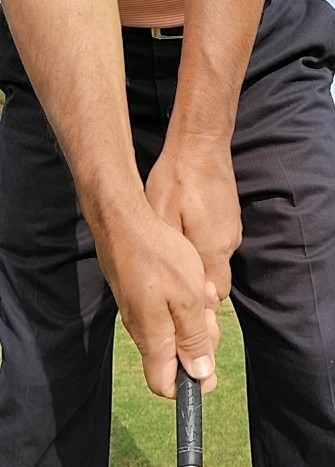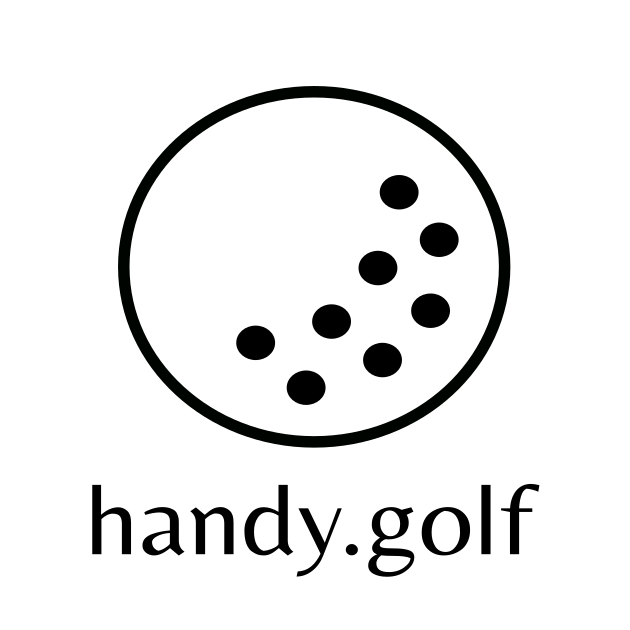
Talking in the 19th Hole
DRIVER. One of the secrets to scoring is to calculate the yardage to play in the shot. This task is now easier because Rule 4.3a (1) allows the use of distance-measuring devices. Another benefit of this Rule is that it improves the pace of the game.
However, many players are unwilling to invest in a laser distance-measuring or a GPS watch. These players calculate the distance with one of the traditional methods:
– On par 3s they see the distance on the scorecard, on the tee sign, or on the yardage marker on the ground.
– They view the 100, 150, 200, and 250 yardage markers, which are place in the center of the fairway. These markers usually indicate the distance to the center of the green.
– They view the sprinkler head yardage markers, which also indicate the yard to the green center.

When greens are remodeled, it is common for sprinkler head yardage markers to be out of date. Other common problems are that the sprinkler is changed and the mark is not placed; and that the mark comes off and is lost.
The golf pro should have an inventory of the sprinkler head yardage markers. The hole, distance, and location of the sprinkler must appear in this record, for example, Hole 1, Yards 176, Center-Right Location. The Marshal must periodically check that the sprinklers have the mark. Caddies inform the Caddy Master when a mark is missing. The Caddy Master tells the professionals to request a replacement.
All the sprinkler head yardage markers are essential, but the priority is on the area where the tee shots on par-four end and the area where the second shots on par-five end.
During the game, it is satisfying to walk to a sprinkler and find the yardage, on the other hand, it is frustrating to go to the sprinkler and realize that it doesn’t have the mark.
It is essential that the grass is mowed around the sprinklers and that they are visible. It is a frequent problem not to find the sprinklers because they are covered in grass, but it is worse that they do not water efficiently for this reason. The greenkeeper and golf pro working as a team will be aware of these details.
Finally, it is vital to improving the control of the distance-measuring devices left in the golf bags that are kept in the clubhouse. Due to the price and demand for these devices, the loss or theft of them is likely to increase.
WOODS. The grip is not considered a foundation because there are good players with different grips. There are good players with weak, neutral, and strong grips (due to the rotation of the hands), and there are those with interlocking and overlapping grips (due to the way they join hands). However, the relevance of the grip is evident with phrases like these:
«A good swing starts with a good grip.»
«I am as good as my grip is.»
«A good grip does not ensure a good swing, but a bad grip is the most likely cause of a bad swing.»

The relevance of a good grip is because the hands are the only part of the body that comes into contact with the club. The hands control the clubface’s angle during the swing and especially on impact, which is where it counts the most.
When teaching beginners, it is essential to get them used to a correct grip. The proper grip will promote the player to initiate the backswing with a dominant movement of the shoulders. It is recommended that in the first classes, the player learns the chipping stroke, gets used to the correct grip, and starts the backswing with the shoulders, before trying to do the full swing. The grip is not particularly comfortable for players at this stage of learning.
A widespread mistake in golf teaching is that we let beginning players make full swings with the right hand in a strong position and holding the grip on the palm, which causes the player to swing a dominant hand movement.
I have several stories to illustrate the importance of a good grip. I use these stories to persuade my students to strive for a good grip. Unfortunately, many of my stories are not successful because the students continue with the wrong grip. Some players do not get a good grip due to their lack of attention to detail. Other players prefer to stay with their incorrect grip because they are not willing to go through that period of discomfort that is experienced when changing the grip. Others say that they feel comfortable this way. I tell them that comfortable does not mean that it is okay.
Most of the professional colleagues I have had in my work have a good grip. The grip says a lot about a person’s level of play. Seeing a player with their hands well placed on the grip is like looking at a work of art.
It is never too late to get a good grip. I took it wrong for 30 years. If I could change it, surely you can too. To see some details of the grip visit:
IRONS. Some players shoot directly at the flag regardless of their position. Neither professional players use that strategy, much less should amateur players use it. The golden rule of strategy is only to attack easy flags. When the flags are complicated, you should play for the middle of the green or safe area.
When the flag is difficult, it is better to make a stroke on the putting green a medium or long distance from the hole, and then make a good putt, instead of trying to make an exceptional shot to the flag.
PUTTS. An increasingly frequent request from golfers at the Golf Office and Hole 19 is, do you have a cell phone charger? The Club can meet this need of its members by providing different chargers to the Golf Office and some Power Banks for Hole 19. FORE.
